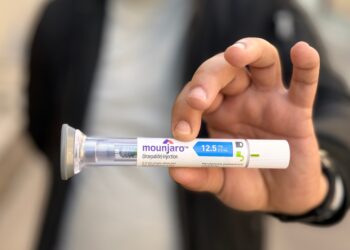Whether it’s fresh, dried, frozen or canned, all fruit contain a natural sugar called fructose. However, it seems that some on social media have become afraid of sugar found in fruit, especially in bananas, grapes and dried fruit. It’s even come to a point where some people recommend avoiding certain types of fruit or fruit altogether.
However, given that close to 85-percent of Americans don’t hit the recommended daily amount of fruit, avoiding fruit can decrease the fiber, vitamins, minerals, antioxidants and phytonutrients you’re taking in. Here’s what you need to know about the sugar content in fruit, any which way you like them.
Natural Verses Added Sugar
The two basic sugars are natural and added sugar. Natural sugar is the sugar that naturally occurs in foods. For example, fruit contains the natural sugar fructose, and milk contains the natural sugar lactose. Natural sugars are in foods to help make them flavorful to eat — and these foods also provide an array of important nutrients (so they taste sweet when you eat them).
Added sugar is added to food to increase sweetness; it comes in several forms such as high-fructose corn syrup, granulated sugar, cane sugar, sugar beet (and many more). One caveat is that if a “natural” sugar like honey, agave or maple syrup is added to a food, it is then categorized as an “added sugar.”
The 2020-2025 Dietary Guidelines recommend that no more than 10-percent of your calories come from added sugar. In 2016, the U.S. Food and Drug Administration (FDA) mandated that added sugar be parsed out from the total sugars on nutrition facts panels so consumers can better differentiate the types of sugar in a food.
The natural sugar you consume is part of your total carbohydrate count (sugar is a carb). The nutrition facts panel is based on a 2,000-calorie diet and assumes that 55-percent of your calories come from total carbohydrates (a combination of natural and added sugar).
Glycemic Index In Fruit
Glycemic index (GI) is a number between 1 to 100 that signifies how quickly your body converts the carbs in a food into glucose. The smaller the number, the less of an impact the food has on your blood sugar. The number is also based on a single carbohydrate food (like pretzels, bread or sugar) that is eaten on an empty stomach. How quickly the carb gets absorbed is based on the sugars, starches and fiber it contains. A food with more fiber will typically have a lower GI number.
While it may be true that certain fruits have higher glycemic indexes than others, remember three things: Eating fruit with other foods, like an apple with peanut butter, will decrease glycemic index; if you’re a healthy adult, your body will respond to the increase in blood sugar by sending out insulin to clear the sugar from your blood; and fruit provides other healthy nutrients your body needs to keep you in tip-top shape.
Fresh Fruit
The trick to ensuring that you’re not taking in too much sugar from fruit is portion control. Eating too much fruit – like several times the daily recommendation – can create an imbalance in other food groups you’re taking in. In order to get all the nutrients your body needs to stay healthy, balance your food groups (protein, carbs, fruits, vegetables, healthy fats and milk and dairy foods).
The recommended daily amount of fruit per day according to the U.S. Department of Agriculture (USDA) is as follows:
- Women ages 19-60+ years: 1.5 to 2 cups
- Men ages 19-59 years: 2 to 2.5 cups
- Men ages 60+: 2 cups
Some people are reluctant to eat fruits like bananas, grapes and mangos because they have “too much sugar.” Here is a breakdown of those fruit:
- 1 large banana (8 to 8-7/8”): 121 calories; 31 grams carbs; 17 grams sugar
- 1 small banana (6 to 6-7/8”): 90 calories; 23 grams carbs; 12 grams sugar
- 1 cup seedless grapes: 62 calories; 16 grams carbs; 15 grams sugar
- 1 mango: 124 calories; 31 grams carbs; 28 grams sugar
If you’re keeping tabs on the total amount of natural sugar or calories that you’re taking in (or a larger fruit is just too much for one sitting), keep in mind that you don’t need to eat an entire fruit all at once. What matters most is getting in your daily recommended amount of fruit — and the important nutrients that come along with it.
Bottom Line: Any fruit you choose — in any form — can count towards your recommended daily fruit count, and provide you with important nutrients. If you’re worried about the sugar content, even if it is natural, then pay attention to the portion size of the fruit you’re eating, but don’t avoid the goodness of fruit altogether.












